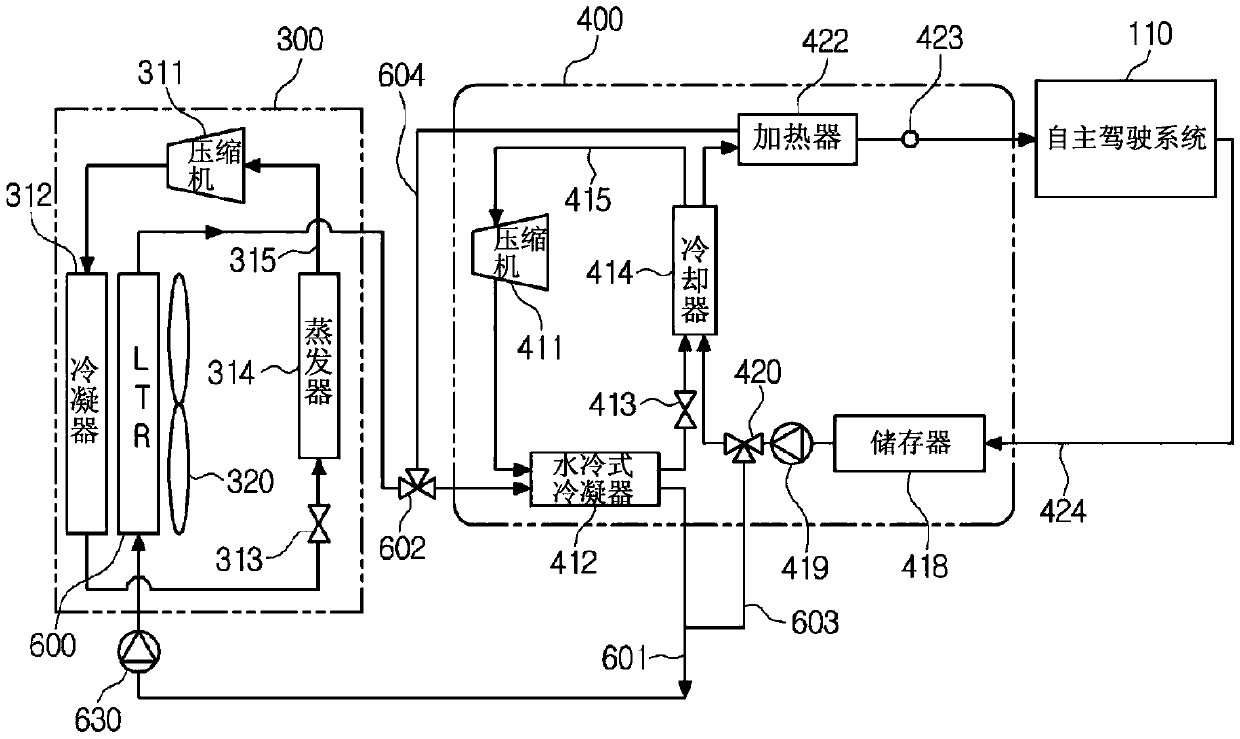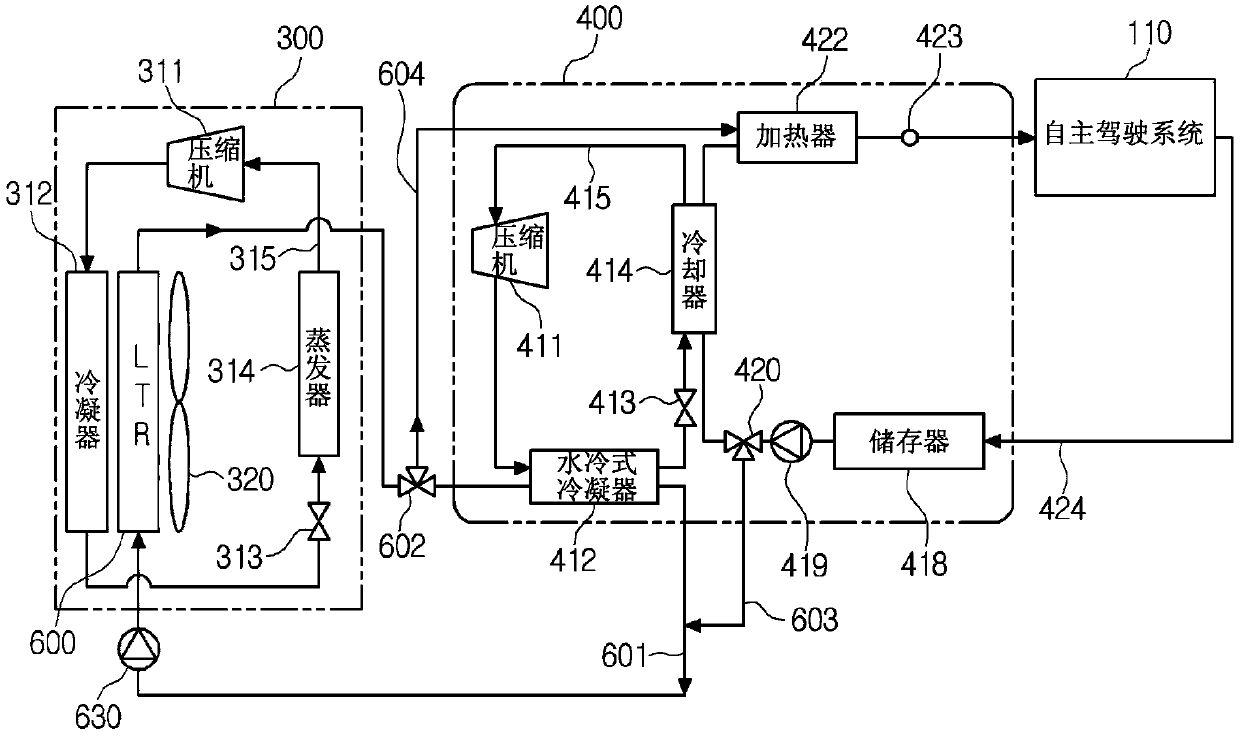Vehicle thermal management system
A thermal management system and technology for vehicles, applied in the field of thermal management systems for vehicles, can solve problems such as occupying vehicle packaging space, autonomous driving failures, accidents, etc., and achieve the effects of reducing the number of assemblies, improving cooling capacity, and improving productivity
- Summary
- Abstract
- Description
- Claims
- Application Information
AI Technical Summary
Problems solved by technology
Method used
Image
Examples
Embodiment Construction
[0042] Hereinafter, the technical structure of the thermal management system for a vehicle according to the present invention will be described in detail with reference to the accompanying drawings.
[0043] figure 1 is a diagram of a thermal management system for a vehicle according to a first preferred embodiment of the present invention, figure 2is a diagram showing a cooler cooling mode of the thermal management system for a vehicle according to the first preferred embodiment of the present invention, and image 3 is a diagram showing a radiator cooling mode of the thermal management system for a vehicle according to the first preferred embodiment of the present invention.
[0044] Such as Figure 1 to Figure 3 As shown in , a thermal management system for a vehicle according to a first preferred embodiment of the present invention is used to perform a series of thermal managements to cool or heat electronic components of an autonomous vehicle such as computers, lidars,...
PUM
 Login to View More
Login to View More Abstract
Description
Claims
Application Information
 Login to View More
Login to View More - R&D Engineer
- R&D Manager
- IP Professional
- Industry Leading Data Capabilities
- Powerful AI technology
- Patent DNA Extraction
Browse by: Latest US Patents, China's latest patents, Technical Efficacy Thesaurus, Application Domain, Technology Topic, Popular Technical Reports.
© 2024 PatSnap. All rights reserved.Legal|Privacy policy|Modern Slavery Act Transparency Statement|Sitemap|About US| Contact US: help@patsnap.com










